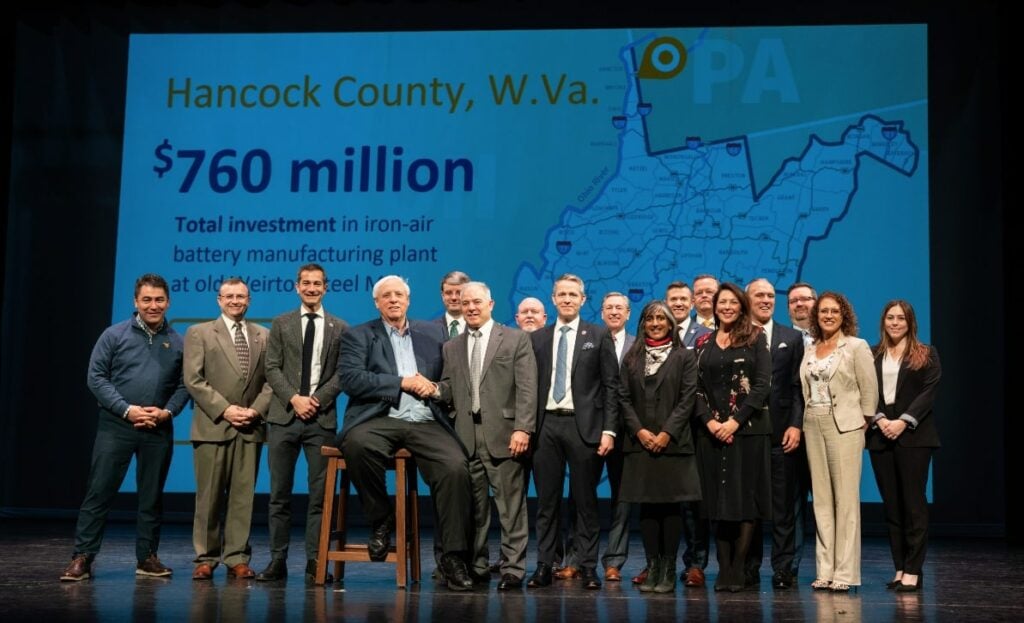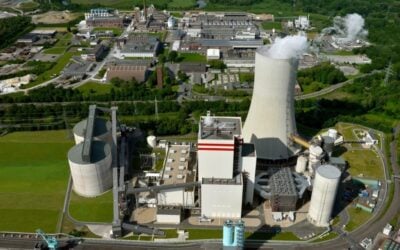
‘Multi-day’ battery storage startup Form Energy’s proprietary iron-air battery is set to be deployed at the sites of two US coal power plants due for retirement.
Form Energy said yesterday that definitive agreements have been signed with Minnesota-headquartered utility company Xcel Energy for the two projects, one in Minnesota and the other in Colorado.
Enjoy 12 months of exclusive analysis
- Regular insight and analysis of the industry’s biggest developments
- In-depth interviews with the industry’s leading figures
- Annual digital subscription to the PV Tech Power journal
- Discounts on Solar Media’s portfolio of events, in-person and virtual
Form has developed a novel electrochemical storage tech that it claims can be made at low-cost using abundant materials, and capable of discharging at relatively high power for much longer than lithium-ion or even flow batteries.
If it pencils out as the company hopes, that gives it a good shot at directly replacing the dispatchable attributes of thermal power plants, CEO Mateo Jaramillo told this site as the company emerged from stealth mode a while back.
Since then, Form has netted significant investment – including a US$450 million fund raise which closed in October – decided to put its first factory in West Virginia, and signed up to pilot project or feasibility study partnerships with two utilities, Great River Energy (also in Minnesota) and Georgia Power.
For Xcel, Form Energy will deploy two separate 100-hour duration iron-air battery energy storage systems (BESS), each of 10MW/1,000MWh, one at Sherburne County Generating Station in Becker, Minnesota, the other at Comanche Generating Station, Pueblo, Colorado.
The battery systems, which basically charge and discharge energy by causing iron in the battery to oxidise i.e., rust, and then de-oxidise, were selected after “extensive modelling” of the utility’s grid, Form Energy said.
Modelling showed that the iron-air battery tech would help Xcel integrate higher shares of renewables, including wind, with the utility’s service area one of the US’ richest regions in terms of wind resource.
Meanwhile the iron-air battery storage systems can enhance the resiliency and security of electricity supply. That includes during extreme weather conditions like, say, a polar vortex or winter storm, as well as in day-to-day, week-by-week and seasonal variations in weather. Xcel and Form Energy used the battery company’s Formware software modelling tool.
The projects could come online as early as 2025, Form Energy said.
Colorado’s Pueblo power plant is scheduled for retirement in 2030. According to various local news sources it has had a troubled existence in the past few years, marked by poor performance at its newest generating unit, installed in 2010.
CORE Electric Cooperative, one of the plant’s co-owners, has decided to give up an ownership stake in the plant it paid US$366 million for, a September 2022 report by Colorado Public Radio said. Discussion over replacing the plant has included debate over whether renewables or new nuclear would be the right choice, as well as how to replace local tax contributions from the coal plant’s contracts.
Sherburn County Generating Station will begin decommissioning with the shutdown of the first of three units this year, the second in 2026 and the last in 2030. Last year, regulators gave approval for Xcel Energy’s plan to build a 460MW solar PV plant to partially replace the coal plant.
Technology to take on serious challenges
Form Energy CEO Jaramillo took part in Energy-Storage.news’ recent series of Year in Review blogs, looking back on 2022 and ahead into this year.
The main challenge facing electric grid operators today, is “how to manage the multi-day variability of renewable energy without sacrificing reliability or cost,” the CEO said.
“In fact, many battery technologies on the market can only provide, at most, four to six hours of energy storage at full rated power.”
It was to solve this problem, as well as to help decouple the energy storage industry from supply chain challenges by coming up with a technology that could do it all using low-cost abundant materials that could be domestically sourced within the US – or likely in almost any market the company went to – according to Jaramillo.
Energy-Storage.news’ publisher Solar Media will host the 5th Energy Storage Summit USA, 28-29 March 2023 in Austin, Texas. Featuring a packed programme of panels, presentations and fireside chats from industry leaders focusing on accelerating the market for energy storage across the country. For more information, go to the website.






